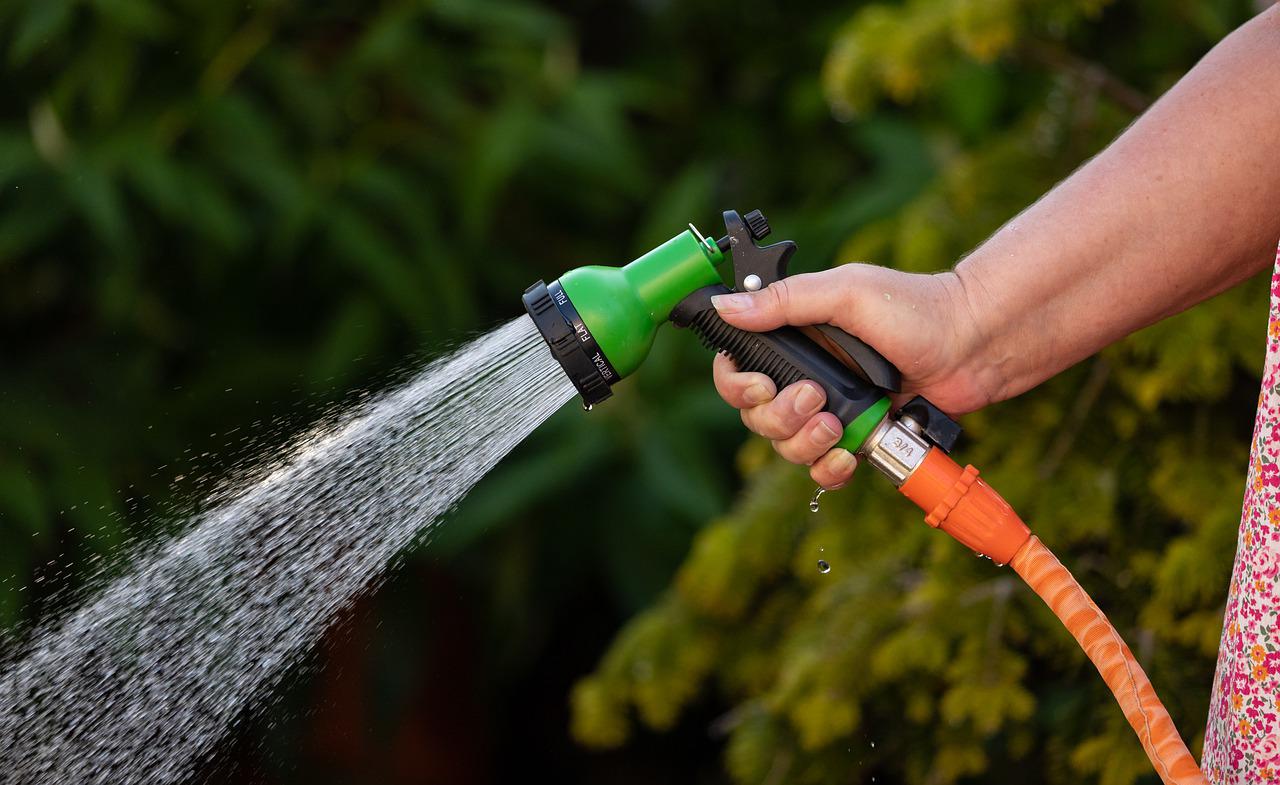Your shrubs are an important part of your landscape. They might add foundational plantings to your plant beds, create privacy or borders, and they likely add lots of aesthetic appeal!
But are you doing everything that you can to take care of your shrubs? Are you certain which shrub care tasks are most important?
More often than not, we find that homeowners assume that their landscape shrubs are self-sustaining and that they don’t need to do anything to care for them. In reality, shrubs need some care and upkeep just like the other plants that make up your landscaping.
In this article, we’ll talk about how to take care of shrubs so that you get the most value out of them.
Make Sure You’re Watering Your Shrubs Properly
Are you remembering to water your shrubs? While established shrubs may not need much supplemental water, new shrubs definitely will. And even well-established shrubs are likely to need some help during periods of dryness and drought.
Water is the lifeblood of all living things and it’s no different with your plants.
Oftentimes, shrubs receive lots of TLC when they are growing in the nursery. They are watered regularly and provided exactly what they need. But then when they get moved to a new home, sometimes these shrub care tasks are forgotten.

Even though it’s a period of high stress for shrubs, homeowners sometimes forget to provide them with ample water and they start to suffer.
In addition to remembering to water, make sure that you are watering correctly. There is no reason to be watering the foliage of your shrubs. In fact, this kind of practice can actually lead to fungal growth.
Focus on watering the roots of your shrubs, where it’s actually needed. We recommend using a soaker hose for watering. This will put the water down slowly and steadily.
Provide Shrub Fertilization for Better Growth
Shrub care should also include fertilization. This is another shrub care task that is often overlooked or forgotten. Or, more likely, many homeowners don’t even realize it’s needed.
But even in their natural environment, trees and shrubs can struggle due to nutrient deficiencies in their soil. Take those same plants and add them to a landscape, and they often decline and even die.

Fertilizing shrubs can help provide those nutrients so that shrubs can continue to perform well. It’s not something that should be an afterthought. Unfortunately, sometimes it takes a loss of color or vigor for homeowners to suddenly realize that their shrub needs more care.
Improving the soil and nutrient availability for shrubs will help them to perform better. But keep in mind that if a shrub is already performing poorly (and possibly dying), fertilization is not a magic bullet cure.
It’s always optimal if you start fertilization prior to problems. Fertilizing shrubs can be a great act of preventative care. By regularly supplementing the soil with nutrients, your shrubs will live longer and perform better.
Fertilization services can be offered through a Plant Health Care program. This will help ensure that your shrubs are getting professional applications that boost their health.
Protect Shrubs From Disease and Pests
Another task that often becomes an afterthought is a disease and pest prevention solution.
Like fertilizing, it might take a problem for homeowners to recognize that their shrub needs help. Unfortunately, shrub pests and diseases can wreak havoc on your plants if they aren’t addressed. They can do more than just cosmetic damage and actually hurt the health of the tree.
If your shrub is too damaged by a disease or pest, it’s possible it could even die.
Fortunately, a Plant Health Care program can also help prevent some of these problems.
There are many shrub diseases and insects that can be highly destructive to a landscape.
Here are just some that should be on your radar:
- Spider Mites
- Aphids
- Lace Bugs
- Anthracnose
- Bagworms
- And many more!
While sometimes disease and pest problems can’t be avoided, if your shrub is being protected by a Plant Health Care program, it should be able to better stand up to these concerns.
Rather Than Worry About How to Care for Shrubs, Partner with a Pro
Hopefully, this article has given you some insight into how to care for shrubs. But we know that there’s a lot to it.
Rather than having to worry about all of this on your own, it makes sense to invest in professional care.
At Joshua Tree Experts, we can provide cultural recommendations in regard to watering and also set you up on a Plant Health Care Program that will deliver everything else that your shrubs need for optimal performance and health.
We offer three options for tree and shrub care treatment packages. We’ll help you decide which package is best for your property based on a few key factors:
- The species
- The degree of your existing problems
- Your expectations for your landscape
Then, we’ll worry about the details while you get back to enjoying your landscape.
We know that life gets busy and shrub care tasks are often forgotten. But you can let go of the burdens of handling shrub care on your own and let a pro take over.
Different properties are going to require different solutions, but we’ll make sure you’re covered. Because our Certified Arborists know which plant species face typical foes, they’ll be able to make sure preventative treatments are included in your Arbor Shield program to keep your landscape looking its best.
With the right care for your trees, you’ll gain valuable peace of mind. If you’re interested in having your trees inspected and their health assured, contact us for a free consultation or give us a call at 833-JTE-TREE.
Image Source: hose



